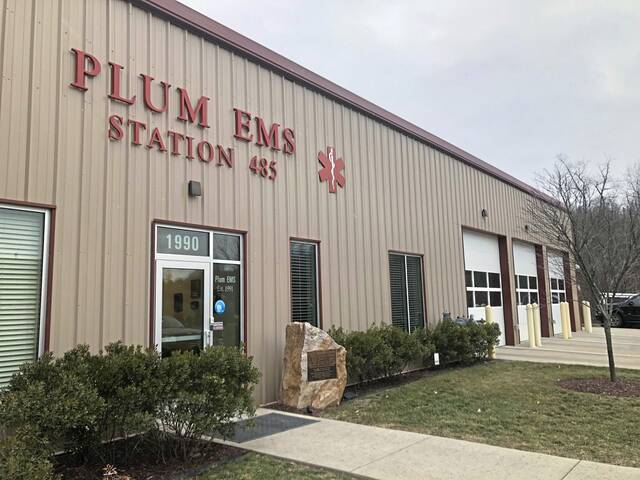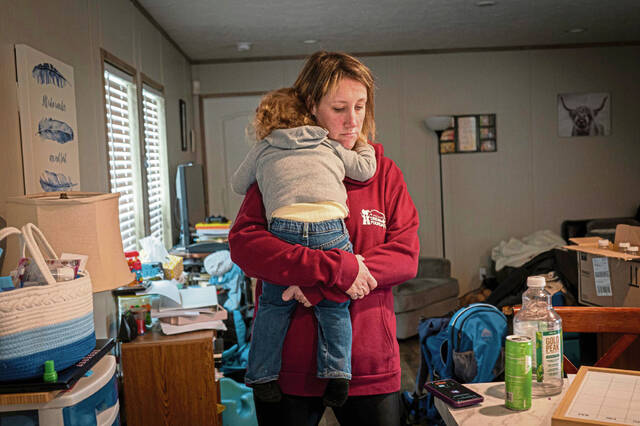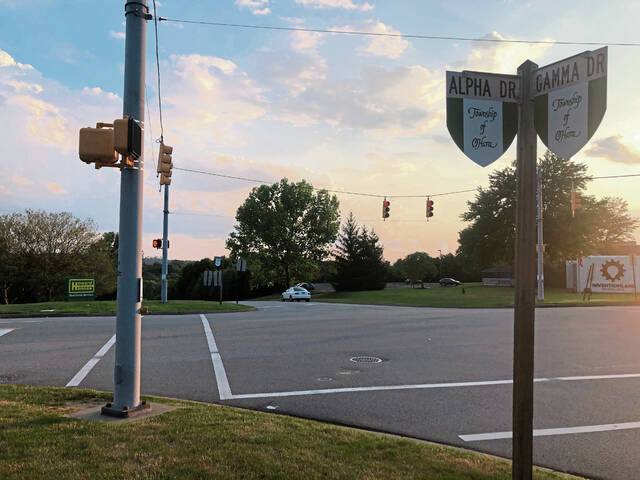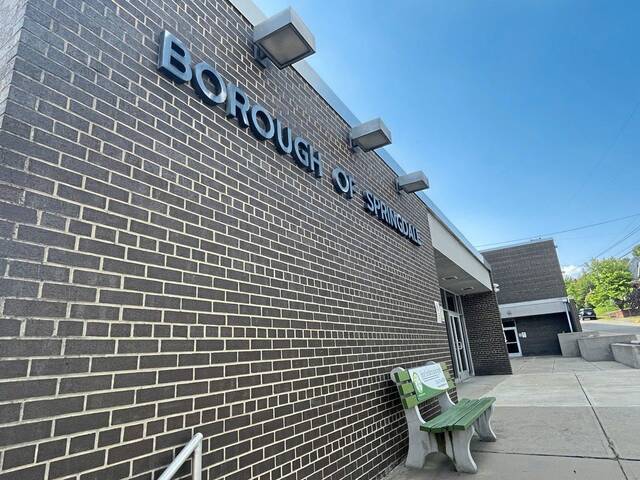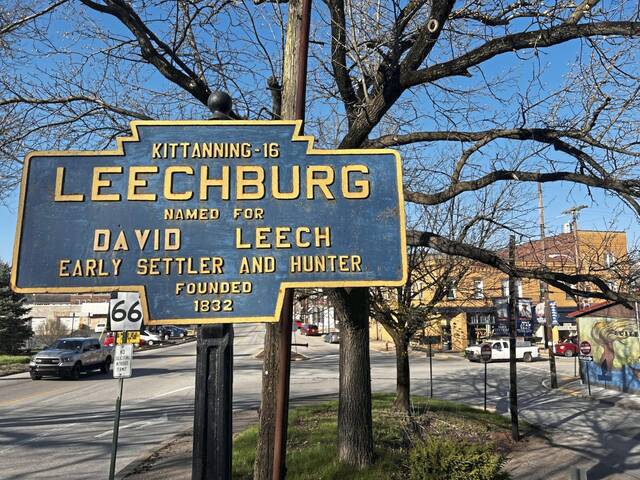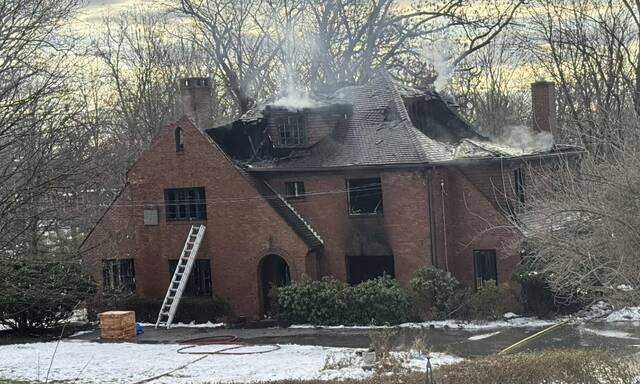When a person suffering from an opioid overdose is saved with Narcan, they go into immediate withdrawal.
The last thing paramedics want is for that person to use again just to get rid of those symptoms, said Brian Maloney, director of operations for Plum Emergency Medical Services.
“When a person comes around from an overdose, there’s a small window when they are vulnerable and that vulnerability opens them up to the idea of getting help,” he said. “We’re going to be right there at that time to say we can take away their withdrawal symptoms and the need they’re feeling to use more.”
The tool they’ll have to do that is called buprenorphine, and Plum EMS will become the second EMS agency in Pennsylvania approved to use it to treat opioid withdrawal.
Plum EMS will launch its nine-month pilot of the program in July, Maloney said.
It will mirror the program started by Pittsburgh in November 2021, according to the state Department of Health.
“At this time, the only EMS agency approved in Pennsylvania to pilot the use of buprenorphine in the treatment of acute opioid withdrawal is the city of Pittsburgh,” said health department spokesman Mark O’Neill.
Pittsburgh was the third city in the country at the time to administer pre-hospital buprenorphine, public safety spokeswoman Cara Cruz said.
In 2022, Pittsburgh City Council approved partnering with Johns Hopkins University to analyze its program.
Buprenorphine, a synthetic opioid also known as Suboxone, is used by hospitals and physicians to treat opioid use disorder and opioid withdrawal, which often is experienced after naloxone is used.
It is delivered through a strip placed under the tongue, Maloney said.
Unlike opioids such as oxycontin, fentanyl, methadone and morphine, there is a limit to buprenorphine’s effect and it’s unlikely a person could overdose on it, said Dr. Michael Lynch, an emergency medicine, medical toxicology and addiction medicine doctor with UPMC.
Lynch helped Plum develop its program and was involved in the implementation in Pittsburgh.
Still, there is a misconception that it’s trading one drug for another, Lynch said.
“It’s important to understand there are medical treatments with tons and tons of data and evidence to support them that makes people’s lives better,” he said. “They are more likely to live. Anything we can do to help people access those treatments, including these kinds of programs, is good and important.”
Pittsburgh’s program is out of its pilot phase and buprenorphine is carried on all ambulances, said Simon Taxel, a crew chief with Pittsburgh Bureau of EMS.
Taxel said fewer people than expected are receiving buprenorphine because they either decline it or it’s not appropriate to give because of the presence of fentanyl, which stays in the bloodstream longer.
Wider availability of naloxone, which Taxel said saves lives, means 911 may not be called.
“The challenge is getting us to the right patient at the right time in order to facilitate it,” Taxel said. “I still think it’s an important tool in our toolbox. When we do engage with patients who are open to it and meet the criteria for it, it can be very effective.”
Maloney said he heard about an EMS agency administering buprenorphine at a conference last year in San Antonio.
Buprenorphine would be offered when paramedics answer an overdose call and the patient responds to Narcan, Maloney said.
“It helps with the immediate withdrawal symptoms after being given Narcan,” Maloney said. “Narcan reverses overdoses but puts that patient in a horrible state of withdrawal. A lot of them, to get rid of withdrawal symptoms, use again to get rid of those feelings.”
Paramedics also will give medication that helps with the nausea and vomiting that come with withdrawal, Maloney said.
Plum EMS developed its program with the emergency department at AHN Forbes Hospital and Forbes Family Medicine, said Dr. Greg Ferenchak, a faculty physician with the Forbes Family Residency Program.
The way it will work is when a person agrees to be treated with buprenorphine, paramedics will contact a Forbes emergency department doctor who will determine if the patient meets the treatment criteria and give the go-ahead to administer buprenorphine in the field. As that happens, arrangements will be made for the patient to get a prescription for buprenorphine that can be used until they can be seen at an opioid use disorder clinic for further care.
“We need to get those patients in for follow-up to give this medication,” Ferenchak said. “Once is fine. We need to sustain their use of the medication to help provide them or get them into remission.”
Plum also will work with UPMC’s Toxicology Telemedicine Bridge Clinic, which Maloney said will cover those with UPMC commercial insurance or no insurance at all.
“No matter what, our intention is to make sure 100% of patients are covered,” Maloney said.
That first dose, given as early as possible, is important in getting people into longer-term treatment, Lynch said.
And it would be most important for those who never get to a hospital to receive it. In Allegheny County, Lynch said 10% to 20% refuse being taken to a hospital after an overdose.
“For those who don’t go to the hospital, this might be their only contact with the health care world,” Lynch said. “It’s an opportunity to engage that person that otherwise wouldn’t exist.”
How long the buprenorphine is used varies from person to person, Lynch said.
The path out of addiction that buprenorphine can help begin all hinges on a person agreeing to it, Maloney said.
“We’ll probably get more nos than yeses,” he said. “If we help one person out of 10, it will be an incredibly satisfying thing we are able to help somebody.”
In Pittsburgh, Taxel said anyone struggling with substance abuse and addiction should not hesitate to call 911. A team of professionals will respond to offer a variety of resources including buprenorphine, naloxone, fentanyl test strips and educational resources, which can be done in the back of an ambulance.
“We want to get those resources to any person in the community who needs them,” he said.


